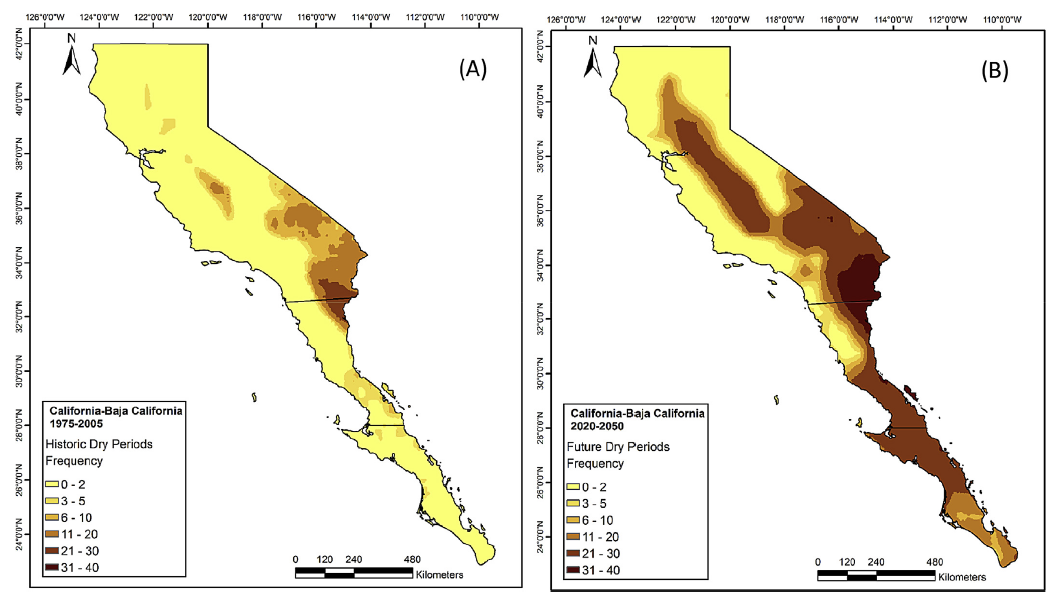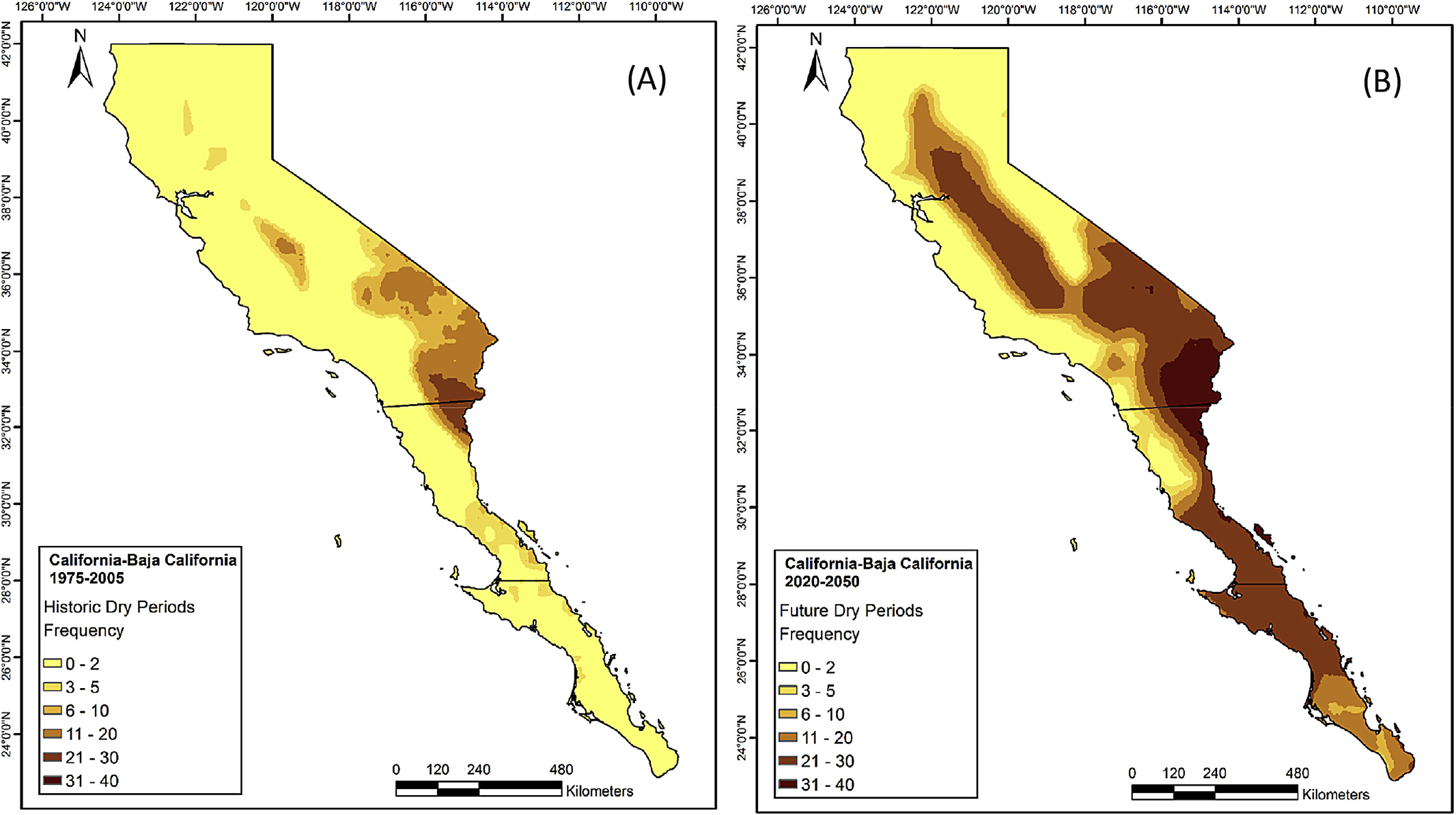Extreme Climate Analysis in California
Compound extreme events in California

Application of our Climate Change Toolkit (CCT) in California using ensemble results of scenario RCP8.5 showed a probable increase in the frequency of dry periods in the southern part of the region while decreasing in the north.
Climate change impacts on extreme events
We developed a tool to predict extreme climatic events by analyzing historical weather patterns in this project. Application of this method in California using ensemble results of scenario RCP8.5 showed a probable increase in the frequency of dry periods in the southern part of the region while decreasing in the north. The frequency of wet periods may suggest higher risks of flooding in the north and coastal strips. We further found that every county in northern California may experience flooding conditions of 1986 at least once between 2020 and 2050.
Climate Change impacts on Extreme events in California


(A) Outputs of the Critical Consecutive Day Analyzer
(CCDA) for dry days. Maps show frequency of 60 consecutive days where rainfall
<2 mm and maximum temperature >30 oC for the 1975-2005 period,
and (B) 2020-2050 period. Future dry-day periods were calculated as the
ensemble of five GCMs for the RCP8.5 scenario.

Projection of the historic flooding conditions of
February 1986 in Northern California-Sacramento (11 continuous days of rainfall
> 250 mm) to future (7 continuous days of rainfall > 200 mm with minimum
daily rainfall > 10 mm/day). (A) Frequencies for the 1975-2005 period, and
(B) for the 2020-2050 period using the RCP8.5 scenario.